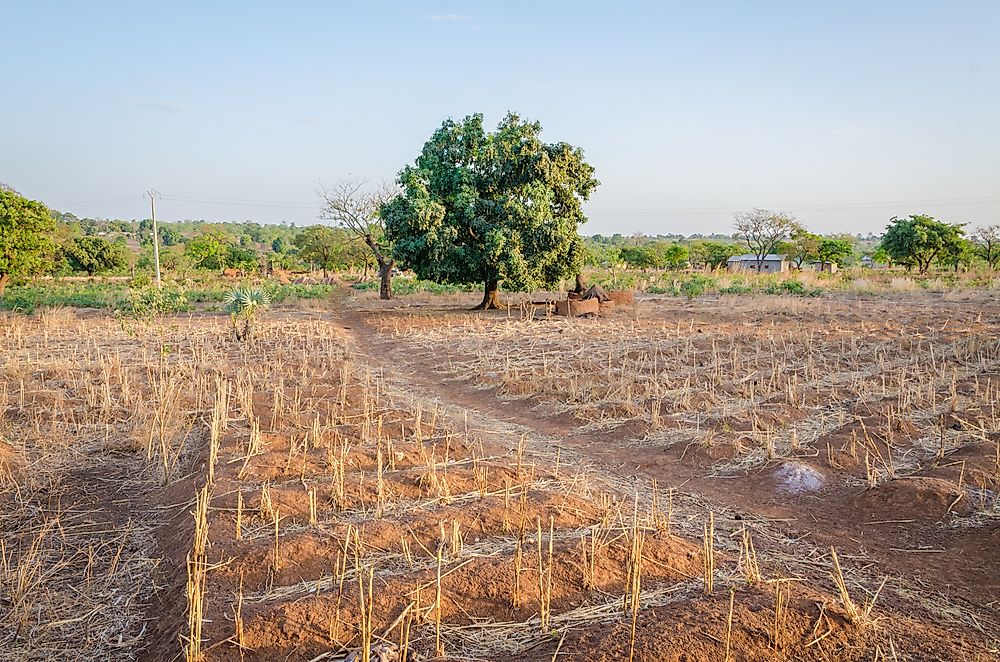What Are The Biggest Industries In Benin?

Benin is a country in West Africa bordering Togo to the east, Nigeria to the west, and Niger and Burkina Faso to the south. It covers an area of approximately 44,310 square miles, making it the 100th most extensive country in the world, and has a population of about 10.8 million people (2016). The majority of the population live on the southern coastline of the Bight of Benin, a portion of the Gulf of Guinea. Benin’s capital is Porto-Novo but Cotonou is where the seat of government is located. The country is a member of several international bodies including the African Union, the UN, the SAPCZ, African Petroleum Producers Association, and the Organization of Islamic Cooperation.
The Overview of the Economy of Benin
Benin’s economy is largely underdeveloped and mainly dependent on subsistence small-scale agriculture, regional trade, and cotton production. Cotton is the major contributor to the economy, accounting for approximately 40% of the country’s GDP and 80% of the export earnings. Since the return to democracy in 1990, the economy of Benin has continued to strengthen, with real GDP growth estimated at 5.7% in 2009. This growth of the economy has resulted partly from the injection of the external investment from both the public and private sources. Inflation has significantly subsided over the past years while the standards of living have also significantly improved compared to two decades ago. However, despite rapid economic growth, the majority of the population (40%) are still living under the poverty line. Benin does not have many industries and even the existing ones are still not well developed. Here are some of the biggest industries in Benin.
Cotton
Benin is the 4th largest cotton producer in Africa after Burkina Faso, Chad, and Mali. Cotton is the major cash crop grown in Benin and the backbone of the economy, accounting for approximately 40% of the GDP and 80% of the export earnings. In 2018, the country exported about 530,000 tons of cotton up from 451,000 tons the previous year. Over two million people in Benin rely on cotton farming as their main source of income. Farming communities involved in cotton farming are typically rural communities in the country with most of the farmers owning approximately 2 hectares of farmland and growing cotton in rotation with other crops. Most of the cotton producers are located in two regions; South-Central and Northern regions. Because of the overreliance in cotton production and the heavy use of agrochemicals, the country’s fertile land has suffered environmental degradation. To ensure high-quality products, most farmers are embracing organic cotton farming whereby they no longer use pesticides and only rely on natural fertilizers. Cotton farming has not only played a key role in export receipt but also in the development of the textile industry in Benin.
Textile
The textile industry is perhaps the largest industry in Benin, owing to the large quantity of cotton produced in the country. Although most of the country’s cotton is exported to the international market, some of it is used locally in the production of clothes. Benin has tens of textile manufacturers spread across the country, with some of these companies specializing in textiles for export. The textile industry in Benin has tremendous opportunities at all the levels of the value chain from design to production and marketing, making the industry one of the top employers in the country. Textile companies collectively account for about 30% of the workforce in the cotton sectors. The industry has been boosted by the large external market and the local demand for apparels. Both the apparel and footwear markets in Sub-Saharan Africa is estimated to be worth $30 billion, providing an opportunity for Benin to sell its garments.
Agriculture
Benin is an agrarian country, with more than half of its population involved in agriculture. In fact, the country’s economy is largely dependent on subsistence agriculture. Most of the agricultural products are meant for local production and only a small proportion finds its way to the international market. Agriculture accounts for about 35% of the GDP. Small-scale independent farmers produce 90% of the agricultural output and only 17% of the total land area is cultivated. Despite the crucial role of the agricultural sector to the economy, this sector is plagued by inefficient and insufficient inputs, lack of rural credit, and poor infrastructure. The sector also suffers from smuggling of crops for export, especially to Nigeria, resulting in understating of crop figure. The major food crops include corn, rice, beans, sorghum, yams, banana, potato, and manioc. Palm products are the second-most exported products after cotton. There are about 30,000 hectares of palm plantation, especially along the coast. Palm oil production is also an important economic activity, generating a decent income for a number of families.
Oil
Benin has several sources of energy including natural gas and oil. Oil production in the country began in 1982 at the Seme offshore oil field, operated by Saga Petroleum Company. Although the country is not a major producer of oil, this sector has contributed significantly to its foreign earnings. In 1991, the Seme oil field produced 1.35 million barrels of oil with the country exporting 1.27 million barrels the previous year. It was estimated that Benin had a reserve of 44 million barrels of oil, capable of meeting domestic demand. However, the country has no refinery and has to export its crude oil and import refined petroleum products. In 2002, the country imported 12,600 barrels of petroleum products per day through the SONACOP, a company responsible for the importation of petroleum product. Benin also has natural gas reserves but production is still not active. It mainly relies on imports to meet local demands.











